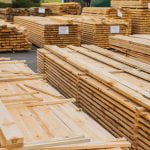What is knife scale in woodworking materials, and why is it essential for woodworking projects? Knife scales are an integral part of many woodworking projects, providing both practical and aesthetic benefits.
In this article, we’ll explore the history, types, importance, and selection of knife scales in woodworking, as well as provide a step-by-step guide on how to apply them to your projects. Whether you’re a seasoned woodworker or just starting out, understanding knife scales and their role in woodworking can greatly enhance the quality of your work.
The use of knife scales in woodworking dates back centuries, with craftsmen utilizing a variety of materials to create durable and visually appealing handles for tools and finished products. Over time, different types of knife scale materials have emerged, each offering unique characteristics that make them suitable for specific applications. Understanding the history behind knife scale use in woodworking provides valuable insight into the evolution of techniques and materials used in the craft.
One of the key aspects of working with knife scales is understanding the various types of materials available for use. From traditional options like wood and bone to modern alternatives such as acrylic and G-10, each material has its own set of properties that can impact the overall performance and appearance of a woodworking project. By learning about these different options, woodworkers can make informed decisions when selecting the right knife scale for their specific needs.
The History of Knife Scale in Woodworking Materials
One of the earliest known uses of knife scales can be traced back to the Bronze Age, where archaeologists have discovered evidence of knives with handles made from materials such as antler and ivory. These early examples showcase the ingenuity and craftsmanship of ancient civilizations, as well as the importance of knife scales in creating functional and beautiful tools.
As time progressed, the use of knife scales evolved alongside advancements in technology and manufacturing techniques. The introduction of metalworking allowed for the creation of more durable and versatile knife scale materials, such as steel and aluminum. Additionally, the industrial revolution brought about mass production methods that made it easier to produce knife scales in large quantities, paving the way for their widespread use in a variety of woodworking projects.
The history of knife scale in woodworking materials provides valuable insights into the evolution of this essential component. From its humble beginnings in ancient times to its modern-day applications, knife scales have played a significant role in shaping both the functionality and aesthetics of woodworking tools and projects.
| Knife Scale Material | Historical Significance |
|---|---|
| Wood | One of the earliest known materials used for knife scales, valued for its natural beauty and versatility. |
| Bone | Commonly used by ancient craftsmen for its durability and ability to be easily shaped. |
| Metal | Introduced during advancements in metalworking, providing greater strength and longevity to knife scales. |
Types of Knife Scale Materials Used in Woodworking
When it comes to woodworking, the choice of materials for knife scales is crucial as it can vastly impact the quality and aesthetics of the final product. Knife scale materials come in a wide variety of options, each with its own unique features and benefits. Let’s take a closer look at some of the most common types of knife scale materials used in woodworking.
Wood
Wood is perhaps the most traditional and widely used material for knife scales in woodworking. It offers a timeless and natural aesthetic, with an extensive range of wood species to choose from. Each type of wood brings its own unique grain patterns, colors, and textures, allowing woodworkers to create truly one-of-a-kind pieces.
Plastic
Plastic knife scales are also popular among woodworkers due to their durability and versatility. Materials such as acrylic and resin-based plastics offer a wide range of colors, patterns, and finishes that can simulate natural materials or offer a more modern aesthetic. Additionally, plastic scales are often easier to work with than natural materials and can be more forgiving during the shaping and finishing process.
Composite Materials
Composite knife scale materials, such as carbon fiber or G-10 (a fiberglass-based laminate), are known for their exceptional strength-to-weight ratio. These materials are highly resistant to moisture, chemicals, and temperature changes, making them ideal for outdoor or tactical applications. While they may not offer the same warmth or natural appeal as wood, composite materials are favored for their reliability and performance in demanding conditions.
The Importance of Knife Scales in Woodworking Projects
There are several reasons why knife scales are important in woodworking projects. Firstly, they serve as a protective covering for the handle, offering a comfortable grip and preventing it from splintering or cracking over time. Additionally, knife scales add visual appeal to the finished product, allowing woodworkers to showcase their craftsmanship through intricate patterns and designs.
When selecting the right knife scale for your woodworking project, it is important to consider both the aesthetic and functional aspects. The material chosen for the knife scale should be durable, moisture-resistant, and capable of withstanding the rigors of everyday use.
Some common materials used for knife scales include:
- Wood: A classic choice for knife scales due to its natural beauty and durability.
- Micarta: Made from layers of linen or paper soaked in resin, micarta provides excellent grip and durability.
- G10: A high-pressure fiberglass laminate known for its strength and lightweight properties.
How to Select the Right Knife Scale for Your Woodworking Project
Selecting the right knife scale for your woodworking project is crucial to achieving the desired outcome. Knife scales are the material used to make the handle of a knife, and in woodworking, they are also used for making handles for various tools such as chisels and carving knives. There are several factors to consider when choosing the right knife scale for your woodworking project, including the type of wood, size, shape, and overall aesthetic.
When selecting a knife scale for your woodworking project, it’s important to consider the type of wood that will best suit your needs. Common types of wood used for knife scales include rosewood, ebony, and maple.
Each type of wood has its own unique characteristics in terms of grain pattern, color, and durability. It’s important to choose a wood that not only looks appealing but also offers the strength and stability required for the specific tool or knife handle.
The size and shape of the knife scale should also be taken into consideration when selecting the right material for your woodworking project. The size of the scale must be suitable for the size of the tool or knife handle being made.
Additionally, considering the ergonomics and comfort of using the tool is vital in determining the shape of the handle. Whether it’s a straight handle or one with curves and contours will depend on how it feels in hand during use.
Lastly, consider how you want your finished project to look. While some woodworkers may opt for a natural finish that highlights the wood’s natural beauty, others may prefer to add color or other decorative elements such as pins or liners. Understanding what aesthetic you’re aiming for will help in narrowing down your options when choosing a knife scale for your woodworking project.
| Wood Type | Characteristics |
|---|---|
| Rosewood | Distinctive grain pattern; reddish-brown color; highly durable |
| Ebony | Dark black color; fine texture; very hard and dense |
| Maple | Light-colored with an even grain pattern; easy to work with; great for detailed designs |
Step-by-Step Guide on Applying Knife Scales to Woodworking Projects
Woodworking projects often involve the use of knife scales to enhance the appearance and functionality of finished products. The process of applying knife scales to woodworking projects requires careful attention to detail and precision to achieve the desired result. In this section, we will provide a step-by-step guide on how to apply knife scales to woodworking projects effectively.
Step 1: Selecting the Right Knife Scales
The first step in applying knife scales to woodworking projects is selecting the right material for the job. Consider the type of wood you are working with, as well as the intended use of the finished product. Common knife scale materials include hardwoods such as maple, oak, and walnut, as well as alternative materials like stabilized wood or synthetic composites. Each material offers unique characteristics that can impact the overall look and performance of the finished project.
Step 2: Cutting and Shaping the Knife Scales
Once you have selected your knife scale material, you will need to cut and shape it to fit your woodworking project. Use precision cutting tools such as band saws or scroll saws to carefully shape the knife scales according to your design specifications. Take your time during this step to ensure that each piece fits seamlessly into the overall design of your project.
Step 3: Gluing and Securing the Knife Scales
After shaping your knife scales, it is time to attach them to your woodworking project. Apply a thin layer of adhesive (such as epoxy or cyanoacrylate glue) to both surfaces that will be bonded together.
Carefully position each scale onto your project’s surface, ensuring proper alignment and even distribution across all areas. Use clamps or pressure devices, depending on the size and complexity of your project, in order to secure each scale firmly in place while allowing the glue an adequate amount of time for curing.
By following these steps carefully, you can successfully apply knife scales to your woodworking project with confidence in achieving a professional-looking finish that enhances both aesthetics and functionality.
Common Mistakes to Avoid When Working With Knife Scales
When working with knife scales in woodworking, it is important to be mindful of common mistakes that can occur during the process. By being aware of these potential pitfalls, woodworkers can avoid costly errors and ensure the successful completion of their projects. Here are some common mistakes to avoid when working with knife scales:
- Choosing the wrong material: One of the most common mistakes in working with knife scales is selecting the wrong material for the project. Different types of wood and other materials have varying characteristics that can impact the final result. It is important to consider factors such as durability, appearance, and workability when choosing knife scale materials.
- Inadequate preparation: Another mistake to avoid when working with knife scales is inadequate preparation. This includes ensuring that the surface of the wood or other base material is properly prepped before applying the knife scales. Failure to adequately prepare the surface can result in poor adhesion and a subpar finished product.
- Improper application technique: The technique used to apply knife scales is crucial to achieving a high-quality result. Common mistakes in this area include uneven application, improper alignment, and inadequate pressure during bonding. It is important to carefully follow recommended techniques and take time to practice before applying knife scales to a final project.
Conclusion
In conclusion, knife scales play a crucial role in woodworking materials, adding both aesthetic appeal and functionality to various projects. As the demand for unique and personalized woodworking pieces continues to grow, the future of knife scales in woodworking materials looks promising. With advancements in technology and an increasing variety of materials available, woodworkers have more options than ever to experiment with different knife scales and create truly one-of-a-kind pieces.
One of the key factors driving the future of knife scales in woodworking materials is the growing interest in sustainable and eco-friendly practices. More and more woodworkers are seeking out natural, renewable materials for their projects, and knife scales made from sustainable sources or alternative materials are becoming increasingly popular. This shift towards environmentally conscious choices will likely continue to influence the use of knife scales in woodworking materials in the years to come.
Additionally, as craftsmanship and artisanal work gain recognition and appreciation, there is a renewed focus on traditional techniques and handcrafted details. Knife scales offer woodworkers the opportunity to showcase their skill and creativity through intricate designs and precise application.
As consumers continue to show a preference for handmade, high-quality products, the demand for unique knife scale options will undoubtedly continue to grow. In essence, it is safe to say that knife scales are here to stay as an essential element in woodworking materials.
Frequently Asked Questions
What Is the Best Wood for Knife Scales?
The best wood for knife scales is usually dense and stable, such as hardwoods like ebony, rosewood, or desert ironwood. These woods are not only attractive but also durable enough to withstand the rigors of everyday use.
What Is Stabilized Wood Knife Scales?
Stabilized wood knife scales are pieces of wood that have been impregnated with stabilizing resin to make them harder, more durable, and less prone to warping or cracking. This process creates a more reliable material for knife handles without sacrificing the natural beauty of the wood.
What Is the Average Thickness of a Knife Scale?
The average thickness of a knife scale can vary depending on personal preference and the type of knife being made. However, most traditional knife scales fall within the range of 1/4 inch to 3/8 inch in thickness. This allows for a sturdy grip without adding unnecessary bulk to the handle.

Hi everyone! I’m a woodworker and blogger, and this is my woodworking blog. In my blog, I share tips and tricks for woodworkers of all skill levels, as well as project ideas that you can try yourself.





